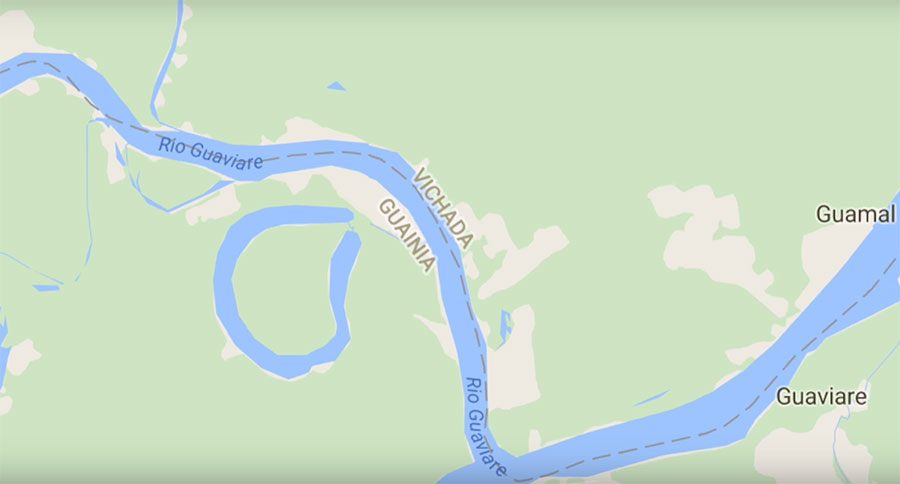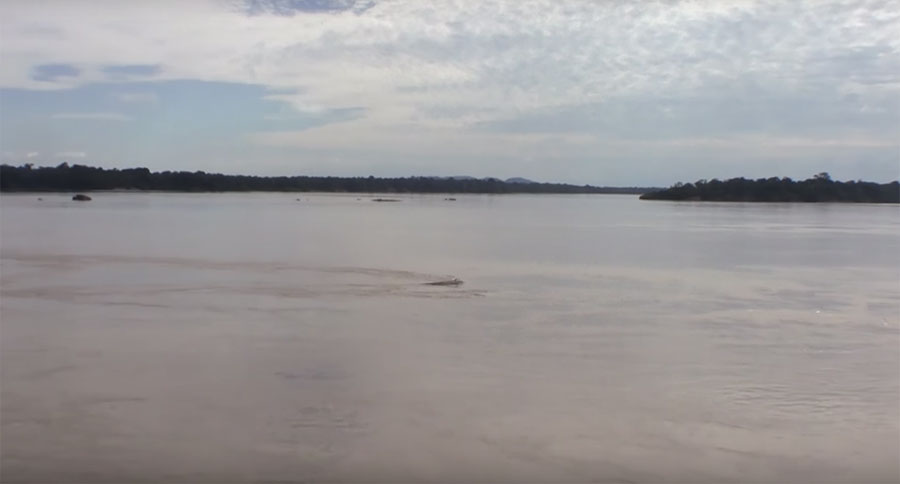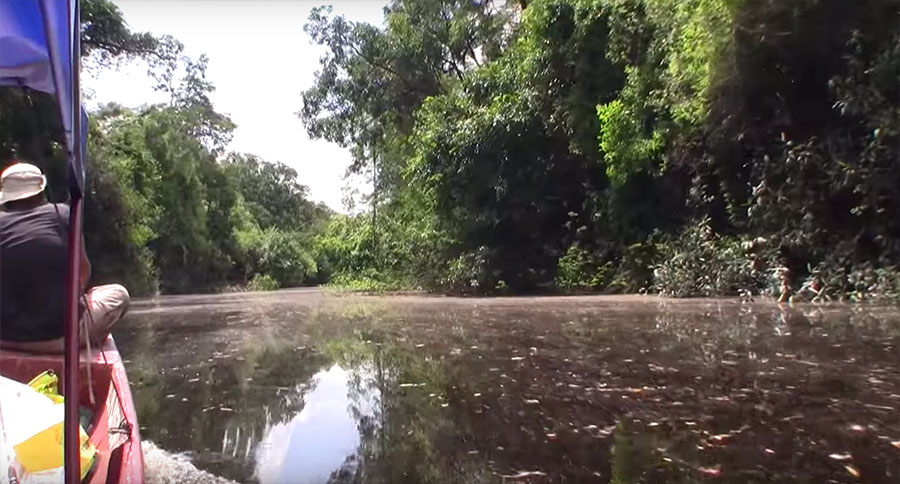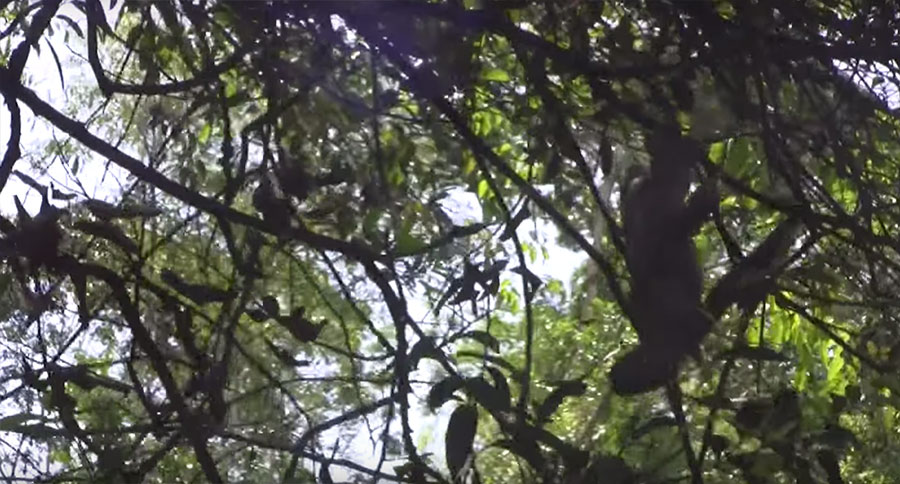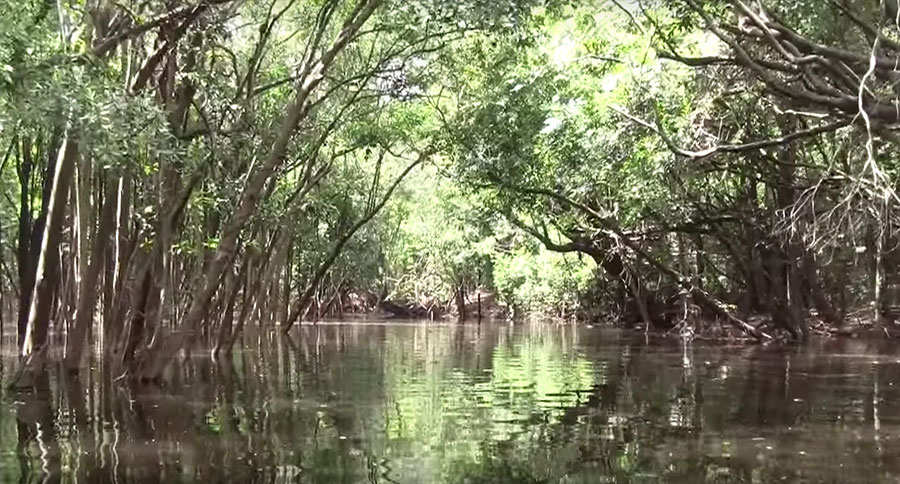“When we were arriving by plane into Puerto Inirida, we had a bird’s-eye view of the whitewater Rio Guaviare near its confluence with the Rio Inirida, and we all noticed a large blackwater oxbow lake very near the river. This is Lago Macasabe. After spending a day and a night on the Rio Atabapo, we decide to make this lake our goal for the day. Seems easy enough.
“Our first stop after leaving the beach on the Rio Atabapo is an overlook at the confluence with the mighty Rio Orinoco, where we are reminded that December is way too early to come to this part of Colombia if the goal is to fish in the main rivers. In a few months, the water flow will be half what it is today, and this scene will look totally different. Next season, we will come in February or March.”
“Our plan for today is to work our way upstream from the main river back towards Puerto Inirida and make some stops in some of the larger creeks, where the water should be shallow enough to collect. This plan is easier said than done, because without detailed maps, it is hard to know how far into the surrounding forest a small creek will go, or if it will flood a relatively flat area where the water can spread out and create habitat for the small ornamental fish we are looking for.”
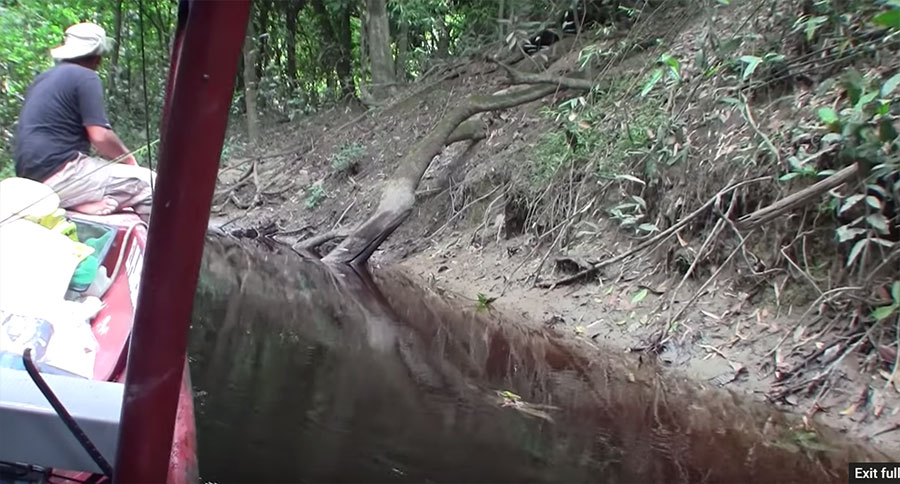
Hernando Gil rides the bow of the team’s river boat, scouting for submerged logs that could damage the boat’s motor.
“This is trial and error, but the wrong kind of error can be very costly.The water in these creeks is not very clear, and there are a lot of logs under the surface that we cannot easily see that could damage the motor on our large river boat. All we can do is go slowly until we reach and obstruction we cannot get around. When this happens, we turn around and look for a better creek.”
“A good canoe will have a deep enough channel to let us travel well away from the river, and into an area that has a wide, shallow flood plain. This habitat is spectacular. There is a lot of wildlife to see. Mostly birds, but some other animals as well, such as this Four-toed Sloth.”
“The channels in these flooded forests are like a maze, and it seems easy to get turned around and lose our way. When in doubt, watch the current, which is always headed back out to the river.”
“This is spectacular habitat for small tetras and dwarf cichlids, but the problem here is the same as we experienced in the Rio Atabapo: the high water has allowed the fish to spread out so much that the fish density is very low, making them hard to collect. There are probably thousands of fish here, but they are not cooperating for the camera, and as soon as I enter the water they move away from me very quickly and move a long way.”
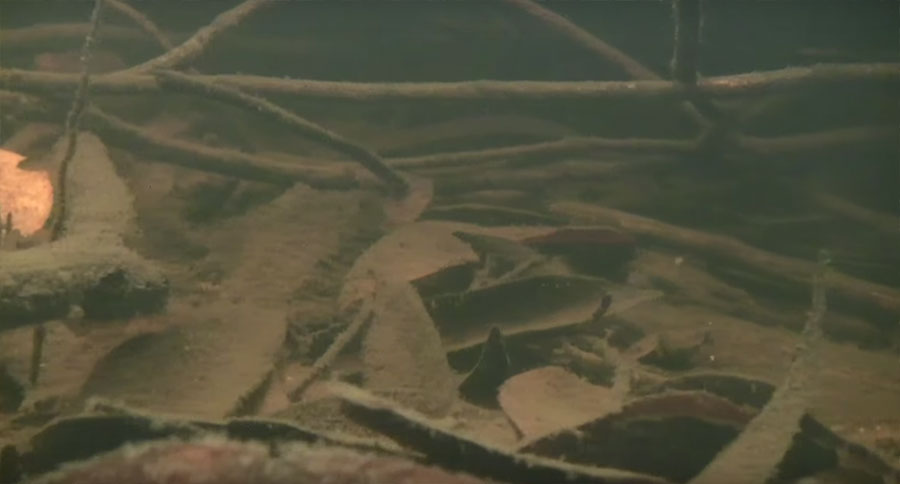
Leaf litter and submerged wood dominate the underwater scene, but the fish scurry for cover at the first signs of human disturbance.
“This plan is not working. It is a beautiful place and a great experience to see and learn about, but the fishing is poor, and it is time to continue on to try to reach Lago Macasabe…
“…you know that feeling you get when you are someplace that you can be, but maybe you should not be?”
Watch Other Episodes Here: Ep. 1 | Ep. 2 | Ep. 3 | Ep. 4 | Ep. 5 | Ep. 6 | Ep. 7 | Ep. 8 | Ep. 9 | Ep. 10 | Ep. 11 | Ep. 12 | Ep. 13 | Ep. 14 | Ep. 15 | Ep. 16 | Ep. 17 | Ep. 18 | Ep. 19 | more to come…

